
THE XERCES SOCIETY FOR INVERTEBRATE CONSERVATION Aquatic Invertebrates in Pacific Northwest Freshwater Wetlands |
| Identify taxa |
|
Phylum Mollusca Key to Mollusca | List of Mollusca taxa The oceans are home to an incredible diversity of mollusk species. The mollusks are debatably the smartest invertebrates are large mollusks that live along our rocky Pacific Northwest shores, and the largest invertebrates (also mollusks) may lurk off our coast. A mere 300+ million years ago, mollusks began to invade fresh waters, and have since adapted and diversified into nearly every possible freshwater habitat, from tiny springs to freshwater seas. However, it's only taken a few hundred years for habitat loss and competition with exotic species to make freshwater mollusks one of the most endangered invertebrate groups. Ironically, some of the exotic species causing the greatest harm are very successful introduced mollusks. Only two of the major molluskan orders are found in wetlands: the Bivalvia (clams and mussels) and the Gastropoda (snails and limpets). Nevertheless, they play very significant roles in wetland ecosystems. Bivalvia means "two-doors", or in this case, two halves of the shell. The bivalves include the clams and mussels and are represented in the Pacific Northwest by only a handful of species, within the suborders Unionoida and Veneroida. They have a large, strong foot for moving around, and two tubes that allow them to pull water into the body, filter out food, then push the used water back out of the body. Gastropoda is Latin for "stomach-foot". These diverse and important mollusks slide along scraping diatoms off rocks with a rasp-like mouthpart called a radula. Gastropods are represented in wetlands by two groups. The snails, with their hard, coiled shells, are well known to most everyone. The lesser known limpets have uncoiled shells and are most familiar to those fond of rocky ocean shores. Mollusks live in nearly all aquatic environments, from tiny headwater streams to large rivers and from isolated ponds to the Great Lakes. Some gastropods can also be very tolerant of poor water conditions, which makes the group a likely source of invasive species. One of the most notorious examples of such invasions in the Northwest is the New Zealand mud snail (Potamopyrgus antipodarum), which is only a few millimeters long, but can become so abundant that they blanket a stream or river bottom! |
Key to the Mollusca:
|
|||
| Gastropoda - snails (most families) - very diverse; shell shape and color vary widely, but all have a single shell that is coiled one to several times and that the soft body can be withdrawn into |
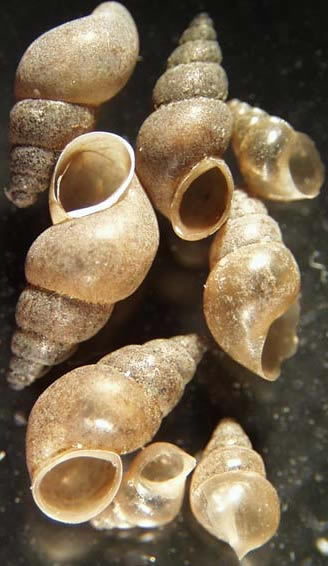   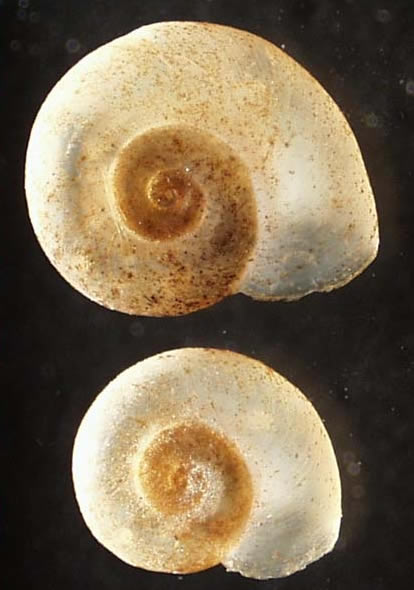 |
||
| Gastropoda
- freshwater limpets Ancylidae and some Lymnaeidae - have a single, uncoiled shell that is similar to a bottle cap and protects the soft body only from above |
 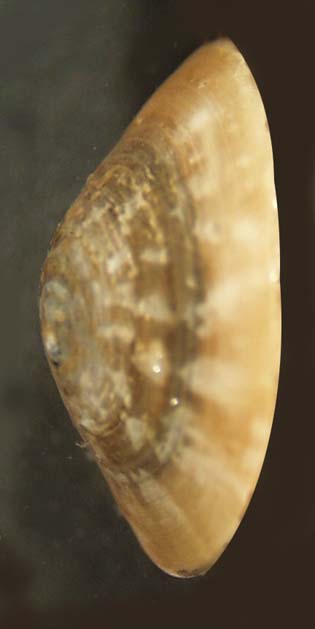 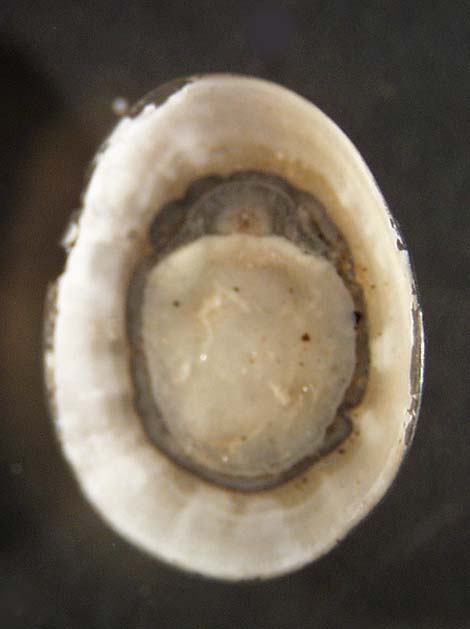 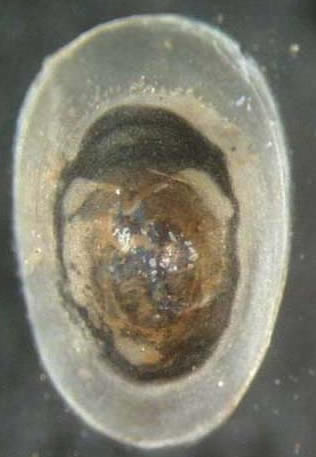 |
||
Veneroida (clams and zebra mussels) |
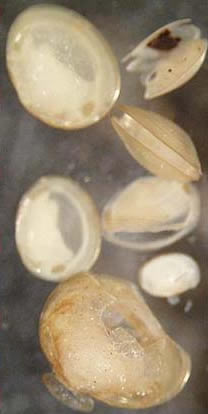 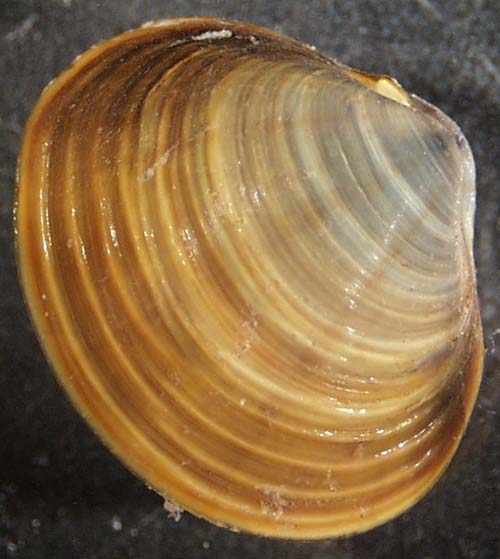 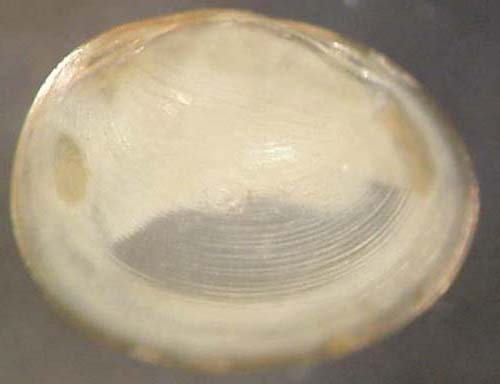 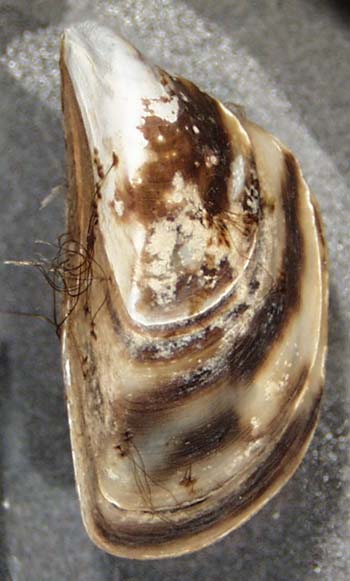 |
||
| Unionoida (mussels) have 2 similar looking shells connected by a hinge; usually very large, brown to black, and oblong with the hinge just off-center of the one of the long edges of the shell |
 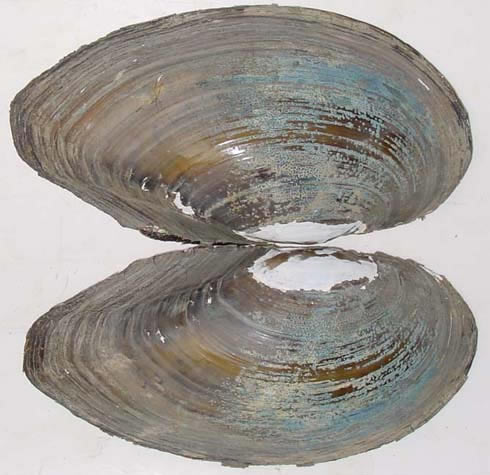 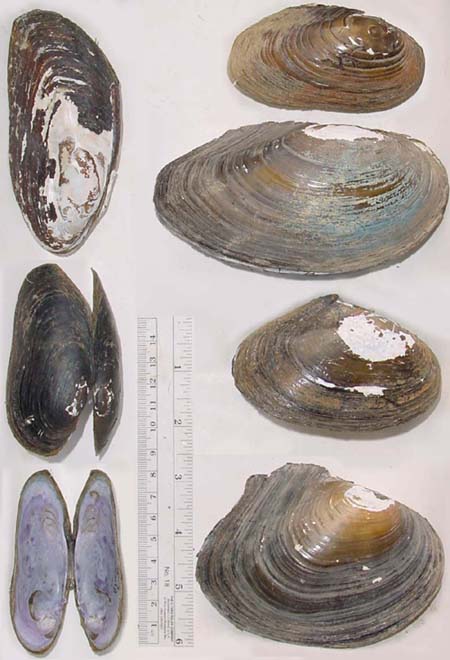 |
||
|
|
Gastropoda - snails |
© 2007 Xerces Society
Contact info@xerces.org
